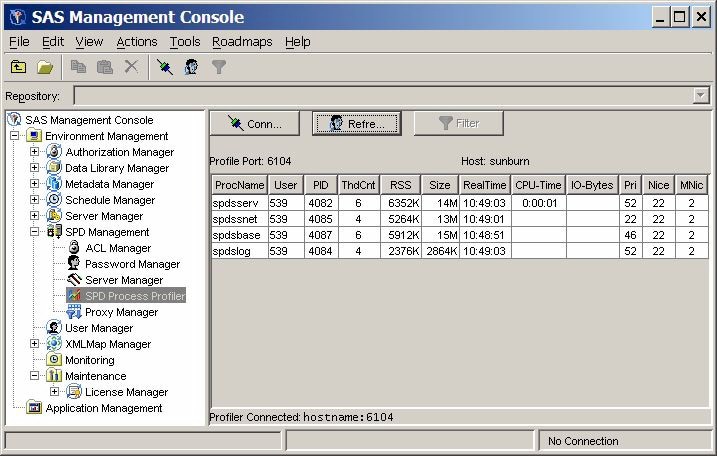Introduction
SAS SPD
Server 4.5 provides a performance monitoring server called spdsperf. The SPD Server Performance Server is an optional
component and is not required for normal operation of SPD Server.
The purpose
of the SPD Server Performance Server is to gather SPD Server process
performance information and to post it to the SPD Server Management
section of the SAS Management Console application. The SPD Server
performance information consists of memory and resource allocations
by users, and SPD Server processes spawned by an SPD Server Name Server.
All SPD Server users must connect to an SPD Server Name Server before
their SPD Server session is spawned. Each SPD Server Name Server owns
a dynamic family of subordinate SPD Server processes that are created
and terminated by SPD Server users and jobs.
The SPD
Server Performance server information is stored in the SAS Management
Console. The SAS Management Console has a folder that is reserved
for SPD Server management. The SPD Management folder is a child to the Environmental Management folder in SAS Management Console. When you expand the SPD Management folder, the bottom-most utility is the SPD Process Profiler. When you highlight the SPD Process Profiler utility, the process information
table that is located in the right panel displays performance summary
statistics. Each row in the performance summary statistics table provides
information about a single SPD Server process that was spawned on
the SPD Server Name Server residing at the specified PID, or port
ID.
Note: SPD Server Performance Server is currently not
available for the Windows or Linux X64 platforms.
The display
of memory and resource allocations in the SPD Process
Profiler allows SPD Server Administrators to use the
SAS Management Console as a handy view point to review which SPD Server
processes are occupying host computing resources, how the resources
are distributed across users and processes at a given point in time,
and whether the resource uses and distributions are appropriate for
your computing environment.
The SPD
Server Performance Server is not limited to displaying its performance
summary statistics in the SAS Management Console application. You
can also configure the SPD Server Performance Server, when you launch
it, to create text log files that can be saved locally on the SPD
Server host machine. SPD Server ships with a PERL utility called process_perf_log that can parse the log that was created
by the SPD Server Performance Server.
